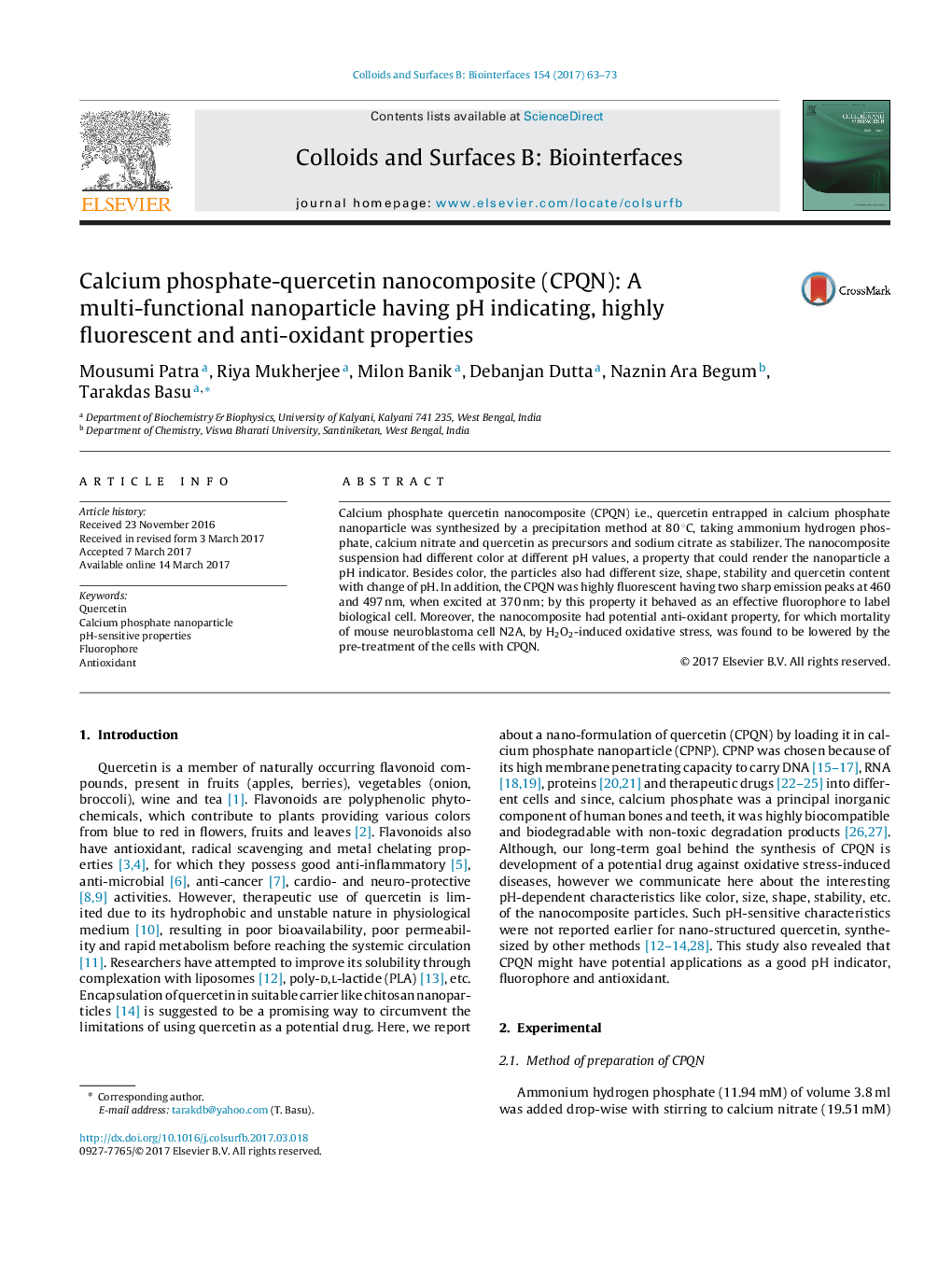| Article ID | Journal | Published Year | Pages | File Type |
|---|---|---|---|---|
| 4983312 | Colloids and Surfaces B: Biointerfaces | 2017 | 11 Pages |
â¢Solubilization of quercetin through entrapment in calcium phosphate nanoparticle.â¢CPQN had pH-dependent color and so, may be used as a pH indicator.â¢CPQN had different size, shape, stability and quercetin content at different pH.â¢Particles were highly fluorescent and may be used as fluorescence probe.â¢The particles had higher antioxidant activity than that of free quercetin.
Calcium phosphate quercetin nanocomposite (CPQN) i.e., quercetin entrapped in calcium phosphate nanoparticle was synthesized by a precipitation method at 80 °C, taking ammonium hydrogen phosphate, calcium nitrate and quercetin as precursors and sodium citrate as stabilizer. The nanocomposite suspension had different color at different pH values, a property that could render the nanoparticle a pH indicator. Besides color, the particles also had different size, shape, stability and quercetin content with change of pH. In addition, the CPQN was highly fluorescent having two sharp emission peaks at 460 and 497 nm, when excited at 370 nm; by this property it behaved as an effective fluorophore to label biological cell. Moreover, the nanocomposite had potential anti-oxidant property, for which mortality of mouse neuroblastoma cell N2A, by H2O2-induced oxidative stress, was found to be lowered by the pre-treatment of the cells with CPQN.
Graphical abstractDownload high-res image (292KB)Download full-size image
